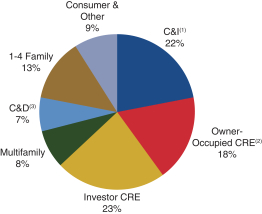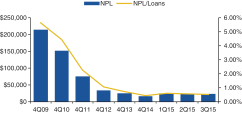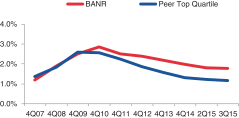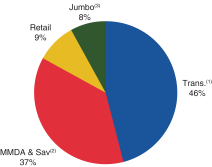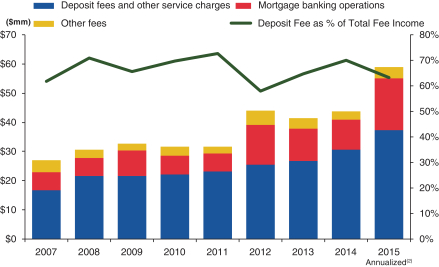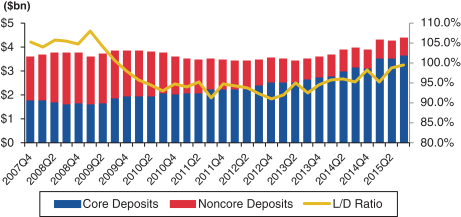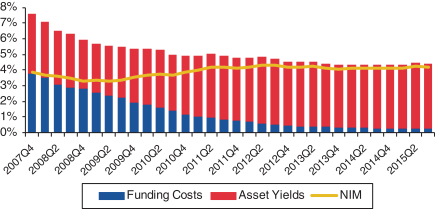EXHIBIT 99.2
BUSINESS SUMMARY
The following is a summary of selected information contained in our annual, quarterly and current reports, proxy statements, and other information that has been filed with the U.S. Securities and Exchange Commission (the “SEC”), including our Annual Report on Form 10-K for the fiscal year ended December 31, 2014, our Quarterly Report on Form 10-Q for the periods ended March 31, 2015, June 30, 2015 and September 30, 2015 and our consolidated financial statements and the related notes thereto. It does not contain all of the information that you should consider before deciding to purchase shares of our common stock. You should read this entire Business Summary carefully, as well as the section entitled “Risk Factors,” which has been filed as Exhibit 99.1 to this Current Report on Form 8-K, as well as the other information included or incorporated by reference herein, before making an investment decision to purchase our common stock. Unless indicated otherwise, or the context otherwise requires, references in this Business Summary to “Banner,” “the Company,” “we,” “us,” and “our” are to Banner Corporation together with its subsidiaries. Unless indicated otherwise, or the context otherwise requires, references in this Business Summary to the “common stock” of Banner are to Banner Corporation’s voting common stock. References in this Business Summary to items “at September 30, 2015 on a pro forma basis” represent unaudited pro forma combined condensed consolidated financial information for Banner and Starbuck as of September 30, 2015, giving effect to our acquisition of Starbuck Bancshares, Inc. that was consummated as of the close of business on October 1, 2015. Cross references contained in the Business Summary section reference our registration statement on Form S-1 filed with the SEC on December 11, 2015.
Our Company
We are a bank holding company incorporated in the State of Washington. We are primarily engaged in the business of planning, directing and coordinating the business activities of our wholly-owned subsidiaries, Banner Bank and Islanders Bank. Banner Bank, founded in 1890, is a Washington-chartered commercial bank that conducts business from its main office in Walla Walla, Washington and, as of September 30, 2015, its 102 branch offices and nine loan production offices located in Washington, Oregon and Idaho. Islanders Bank is also a Washington-chartered commercial bank that conducts business from three locations in San Juan County, Washington. Banner Corporation is subject to regulation by the Board of Governors of the Federal Reserve System (the “Federal Reserve Board”). Banner Bank and Islanders Bank are subject to regulation by the Washington State Department of Financial Institutions, Division of Banks (the “DFI”) and the Federal Deposit Insurance Corporation (the “FDIC”). In March 2015, we acquired Siuslaw Financial Group (“Siuslaw”), the holding company of Siuslaw Bank, an Oregon state chartered commercial bank headquartered in Florence, Oregon, with ten branches serving multiple locations in Lane County including Eugene, Oregon. By the terms of that acquisition, Siuslaw Bank merged with and into Banner Bank. As of September 30, 2015, we had total consolidated assets of $5.3 billion, total loans of $4.4 billion, total deposits of $4.4 billion and total stockholders’ equity of $671 million.
As of the close of business on October 1, 2015, we completed our acquisition (the “Merger”) of Starbuck Bancshares, Inc. (“Starbuck”) and its subsidiary, AmericanWest Bank (“AmericanWest”), a Washington state chartered commercial bank headquartered in Spokane, Washington with 98 branches serving markets in Washington, Oregon, Idaho, California and Utah. Previously, in February 2015, Starbuck completed its acquisition of Greater Sacramento Bancorp (“GSB”), through which GSB merged with and into Starbuck and Bank of Sacramento, GSB’s wholly-owned bank subsidiary, merged with and into AmericanWest. On the Merger closing date, Starbuck merged with and into a wholly-owned subsidiary of Banner and AmericanWest merged with and into Banner Bank. As a result of these transactions, Banner Bank and Islanders Bank continue to be our only bank subsidiaries (collectively, the “Banks”). Pursuant to the Merger, the equity holders of SKBHC Holdings LLC (“SKBHC”), the parent holding company of Starbuck, received an aggregate of $130.0 million in cash and 13.23 million shares of Banner common stock and non-voting common stock. At September 30, 2015 on a pro forma basis, we had approximately $9.9 billion in total consolidated assets, $7.4 billion in total loans, $8.0 billion in total deposits, $1.3 billion in total stockholders’ equity and 203 branches.
Since becoming a public company in 1995, we have invested significantly in expanding our branch and distribution systems with a primary emphasis on strengthening our market presence in the Pacific Northwest United States. Those markets traditionally have included the four largest metropolitan areas in the Pacific Northwest: the Puget Sound region of Washington, the greater Portland market of Oregon, Boise in Idaho and the
